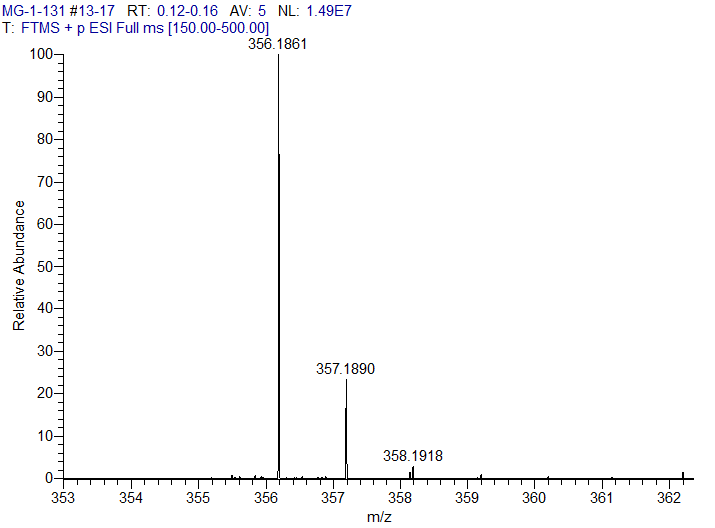1. Services for Submitted Samples
In addition to our open access service, CMSF offers several options for analyzing individual samples. Our rates are per-sample and are calculated based on staff labor and instrument time. These rates are effective July 2nd 2024.
Staff Labor rate:
UC recharge rate: $71/hr
Non-UC recharge rate + NUD: $456/hr
Instrument Time:
UC recharge rate: $72/hr
Non-UC recharge rate + NUD: $284/hr
Examples of Sample rates for UC clients:
An accurate mass ESI/MALDI analysis per-sample is a composite rate of staff labor, instrument & analysis time = $142 per sample for UC. The Non-UC rate is $869/sample.
A basic LC-MS sample would be a bit more per-sample as it requires more instrument time and staff time. Current UC rate for a basic LCMS samples = $213 per sample. The Non-UC rate is $1282/sample.
These rates are based on a minimum of 2 hours total for ESI & MALDI samples and 3 hours total for LCMS samples. If extra time is required for more complex sample prep or data analysis, the rates per sample will be higher.
If this is your first time submitting samples to our facility, we recommend that you contact us prior to submitting your samples so that we may best address your specific scientific needs. We can also generate quotes for you if needed.
For UCD clients, our sample submission is now done thru PPMS. Please contact us via email for details. We would also like information about your sample.
UCD Clients; please contact us first for any work you may wish done that is under contract with an outside business.
Non-UC clients need to contact us first regarding their samples and analysis needs. We have a fillable PDF Customer Information Form as well as a pre-approved Service Agreement which must be signed and returned before any samples are submitted. We establish Service Agreements with all Non-UC clients regardless of amount. If your company or university makes any changes to the pre-approved Service Agreement, those changes will results in us not being able to start the project until both parties agree to changes made to the Service Agreement.
2. Open-access usage
Our facility is pleased to offer open-access use of mass spectrometry instrumentation to members of the UC Davis community. Our open-access program include consultation and training on an instrument. Access includes training, access to the facilities, and technical support. Our UC instrument rate is $72/hour and is billed based on actual reservation and usage. Training is now billed at a per-hour rate of staff time ($71/hr) and typically takes 2 hours.
We only have a limited number of LCMS slots/year and samples are typically run in the PM into the evening.
Please contact us for more information.
The Campus Mass Spectrometry Facilities are supported by a number of funding sources. Please acknowledge the facility in your publications by stating "Analysis for this project was performed in the UC Davis Campus Mass Spectrometry Facilities."
Types of Services:
Electrospray Ionization Services:
The following services utilize the electrospray ionzation technique to ionize your sample. Samples must be free of salts and detergents, and soluble in water or a volatile solvent such as methanol or acetonitrile. Polar solvent systems such as DMSO or DMF are not permitted. If your sample requires a buffer, volatile buffers such as ammonium acetate can be used in place of sulfate, phosphate, or tris buffer systems.

Our Orbitrap instrument is capable of high resolution accurate mass measurements. This small molecule is measured within 0.0005 Da of its theoretical mass.
High Resolution Accurate Mass Measurement (HRMS)
This service utilizes our state of the art high resolution (up to 240,000 FHWM) Orbitrap mass spectrometer to obtain an accurate mass measurement (< 5 ppm) of your compound of interest. This service is typically used for small molecules, peptides, oligonucleotides, and intact proteins (up to 150 kDa). The analyte must be within the mass range of 50-8,000 m/z as well as capable of forming an ion in solution.
Liquid Chromatography Mass Spectrometry (LCMS)
This service also utilizes our Orbitrap mass spectrometer, coupled to a high performance liquid chromatography system, for the separation of a mixture of analytes before ionization and mass analysis as well as an Agilent triple-quadrupole mass spectrometer. This service is generally utilized for crude extracts. Additionally, this service is available on a microfluidic system coupled to our new Xevo G2 Qtof mass spectrometer on a per-sample basis.
LC-MS & Static Nanospray Ionization (nanoESI) Time of Flight Molecular Weight
This service utilizes a Time of Flight (TOF) instrument equipped with either a C4 chip based LC column or a static nanospray source for the ionization of small amounts of sample. This instrument offers mass accuracies of about 10 ppm and can analyze samples of up to 150 kDa. This service is typically most useful when HRMS analysis is not feasible, and when the experiment demands a higher degree of mass accuracy than can be provided by the MALDI instrument. A typical sample best-suited for this service is an intact protein over 30 kDa.
Matrix Assisted Laser Desorption Ionization (MALDI) Services:
The following services utilize the MALDI technique to ionize your sample. Samples that are salt-free give the best data, but if necessary, MALDI can tolerate salts and buffers up to ~50 mM. Polar solvent systems such as DMSO or DMF are not permitted.
(MALDI) Molecular Weight
This service uses a Nd:YAG laser for desorption and ionization of your sample from a stainless steel plate, and is typically used for peptides, peptide mass fingerprinting, oligonucleotides, polymers, and especially intact proteins. The Time of Flight (TOF) mass analyzer on our MALDI instrument offers resolutions approaching 40,000 FHWM for analytes between 500-10,000 m/z, and mass accuracies typically below 10ppm. This instrument can operate in the lower-resolution linear mode for the analysis of proteins and polymers up to 500 kDa.